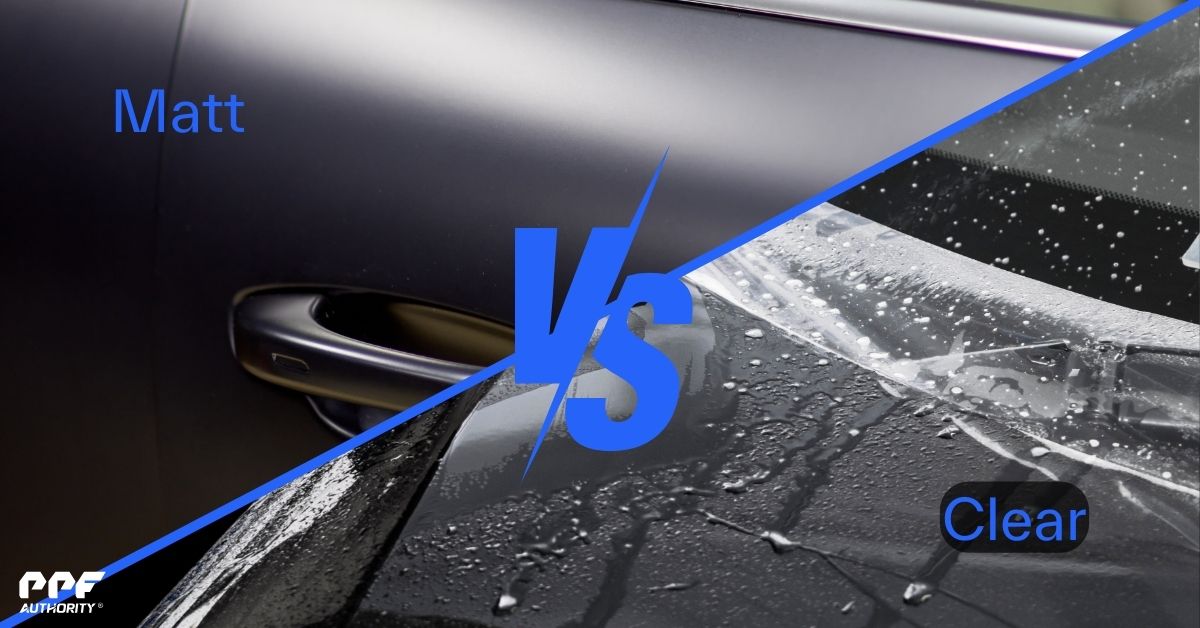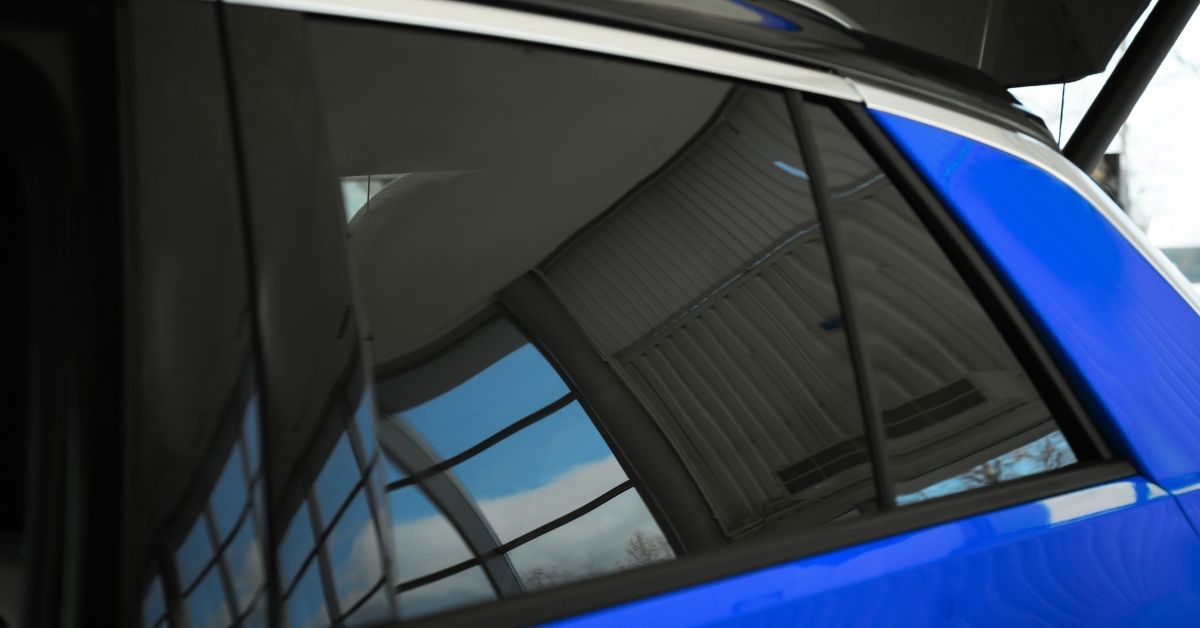When it comes to enhancing and protecting your vehicle’s headlights and tail lights, Smoke and Slate Paint Protection Film (PPF) are two of the most popular options. Both offer tinted finishes that add style and protect against damage, but they differ in appearance, level of tint, and applications.
In this article, we’ll compare Smoke and Slate PPF, explore their unique characteristics, and discuss the different shades available to help you choose the perfect option for your vehicle.
What Is Smoke PPF?
Smoke PPF is a dark, tinted protective film that gives headlights and tail lights a bold, aggressive look. It’s ideal for drivers looking to achieve a dramatic, custom appearance while protecting their lights from scratches, UV rays, and road debris.
Key Features of Smoke PPF:
- Darker Tint: Smoke PPF has a deep, smoked-out appearance that creates a high-contrast, custom aesthetic.
- Enhanced Privacy: The darker tint provides added privacy for your vehicle’s lighted components.
- Durable Protection: Like all PPF, Smoke PPF shields lights from yellowing, chipping, and cracking.
Best For: Drivers seeking a bold, edgy look for their vehicles and prioritizing aesthetics alongside protection.
What Is Slate PPF?
Slate PPF is a lighter tinted film with a grayish hue, offering a more subtle and refined finish compared to Smoke PPF. It’s perfect for those who want to enhance their vehicle’s appearance without heavily darkening the lights.
Key Features of Slate PPF:
- Light Tint: Slate PPF provides a gentle, gray tint that enhances lights without overpowering the overall design.
- Balanced Aesthetic: Offers a sophisticated, modern look that’s versatile across different vehicle styles.
- Long-Lasting Protection: Like Smoke PPF, it guards against yellowing, UV damage, and surface wear.
Best For: Drivers looking for a sleek and understated customization with a focus on subtle elegance.
Key Differences Between Smoke and Slate PPF
| Feature | Smoke PPF | Slate PPF |
| Tint Level | Darker, more dramatic smoked-out look | Lighter, with a soft grayish tint |
| Aesthetic | Bold, aggressive, and custom | Subtle, refined, and modern |
| Light Transmission | Reduces more light output | Maintains higher light visibility |
| Best Applications | Sporty or customized vehicles | Luxury or understated designs |
| Privacy | Higher privacy for lights | Moderate privacy with enhanced style |
Shades of Smoke and Slate PPF
Both Smoke and Slate PPF come in different shades to cater to varying preferences and compliance with local regulations.
Smoke PPF Shades
- Light Smoke:
- Slightly darkens the lights while maintaining a more natural appearance.
- Ideal for those who want a mild customization without heavily reducing light output.
- Medium Smoke:
- Provides a noticeable smoked-out effect, balancing style and visibility.
- Popular for sportier or customized vehicles.
- Dark Smoke:
- Delivers a deep, dramatic tint for a bold and aggressive look.
- Best suited for show cars or vehicles where aesthetics are the top priority.
Slate PPF Shades
- Light Slate:
- Offers the most subtle grayish tint for a refined and barely-there look.
- Perfect for luxury vehicles or drivers who prefer minimal modifications.
- Medium Slate:
- A balanced gray tint that adds sophistication without overpowering the vehicle’s design.
- Works well with a variety of car colors and styles.
- Dark Slate:
- A darker gray tint that borders on the edge of Smoke PPF’s lighter shades.
- Provides a more noticeable customization while maintaining a sleek, modern vibe.
Choosing the Right Shade for Your Vehicle
When selecting between Smoke and Slate PPF and their varying shades, consider the following factors:
1. Aesthetic Preferences
- If you prefer a bold and dramatic look, opt for Smoke PPF in medium or dark shades.
- For a subtle and elegant finish, go with Slate PPF in light or medium shades.
2. Light Output and Safety
- Darker tints like Dark Smoke may reduce light output significantly, which could impact visibility in certain conditions.
- Lighter tints like Light Slate or Light Smoke maintain higher light transmission, ensuring functionality and safety.
3. Vehicle Type
- Sports Cars and Trucks: Smoke PPF complements aggressive, sporty designs.
- Luxury Sedans and SUVs: Slate PPF enhances the sleek and sophisticated appearance of premium vehicles.
4. Legal Regulations
- Check local laws regarding tinted headlights and tail lights to ensure compliance. Many regions have restrictions on how dark lights can be tinted.
- Lighter shades (e.g., Light Slate or Light Smoke) are often a safer choice to meet regulatory standards.
Why Choose PPF for Light Tinting?
While traditional tinting methods like sprays or vinyl films are popular, Smoke and Slate PPF offer distinct advantages:
1. Superior Protection
- Shields lights from UV rays, preventing yellowing and fading.
- Provides impact resistance, protecting against rock chips and scratches.
2. Self-Healing Technology
Many PPF products include self-healing properties, repairing minor scratches and swirl marks when exposed to heat.
3. Removability
Unlike permanent tints, PPF can be removed without damaging the lights, offering flexibility for future changes.
4. Seamless Finish
PPF provides a smooth, bubble-free application when professionally installed, ensuring a flawless appearance.
Professional Installation Matters
For the best results, it’s essential to have Smoke or Slate PPF installed by a professional.
- Precision Fit: Professionals use precision tools and techniques to ensure perfect alignment and coverage.
- Flawless Application: Skilled installers minimize the risk of bubbles, creases, or uneven edges.
- Warranty: Many professional installations come with warranties, giving you peace of mind.
Conclusion
Whether you’re looking to achieve a bold, aggressive look with Smoke PPF or a refined, modern aesthetic with Slate PPF, both options provide excellent style and protection for your vehicle’s lights.
By selecting the right shade and working with a professional installer, you can transform your headlights and tail lights into a standout feature while preserving their functionality and durability.
Explore the variety of shades available in Smoke and Slate PPF and choose the one that best suits your style, needs, and local regulations. With these versatile and protective films, you can elevate your vehicle’s appearance and keep your lights looking flawless for years to come.

